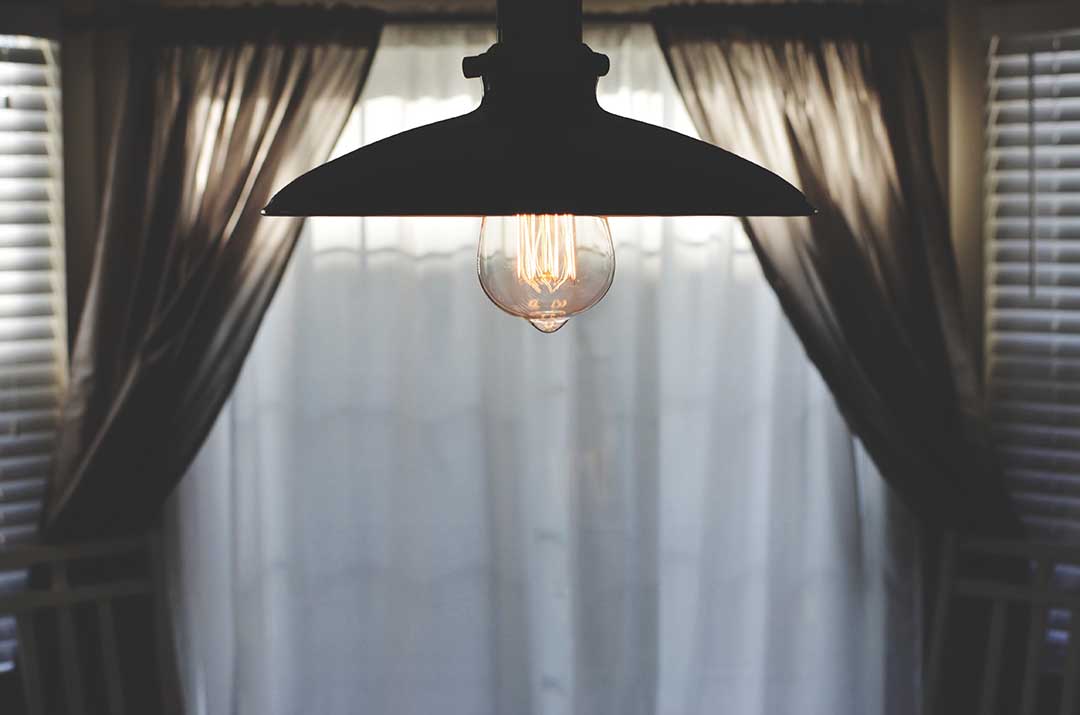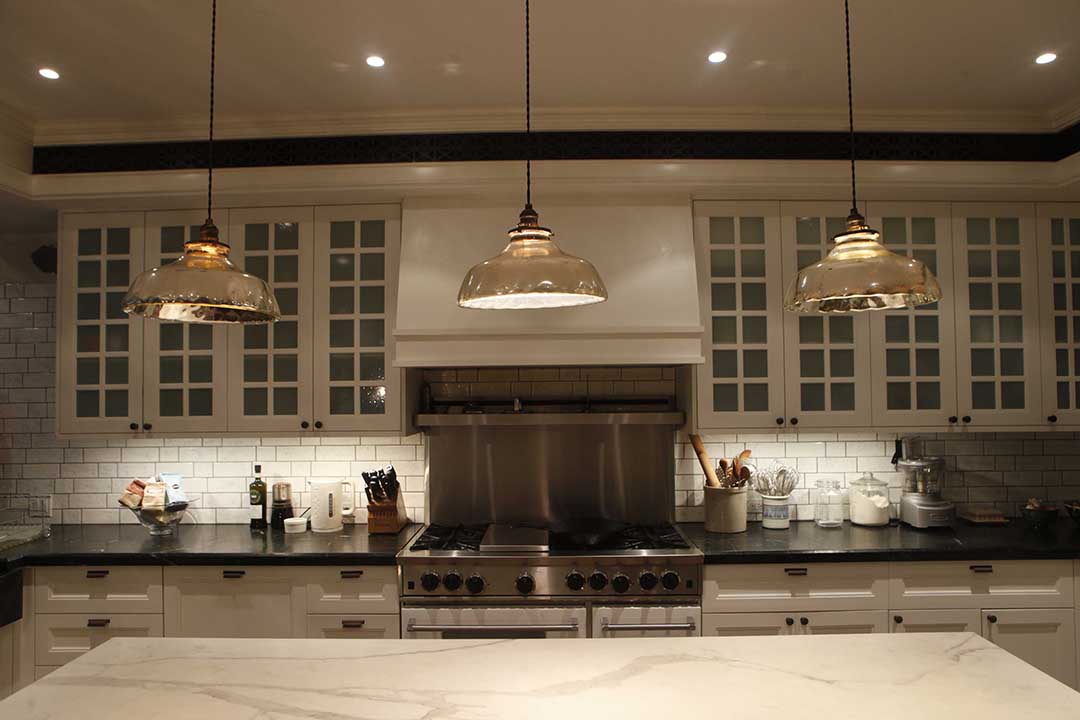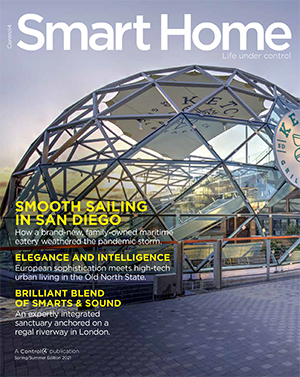Smart Lighting: a Home Solution with Lots of Health Benefits
March 23, 2017
About the guest author: Erin Vaughan is a blogger, gardener, and aspiring homeowner. She resides in Austin, TX where she writes full time for Modernize, with the goal of empowering homeowners with the expert guidance and educational tools they need to take on big home projects with confidence.
Fluorescent lights, computer screens, neon signs—there is certainly a lot of peripheral light in our lives. And to your circadian rhythms, that light can read like a lot of excess noise.
Fortunately, smart lighting and scheduled scenes can help you cut back on the effects of unwanted light—at least in your home—keeping you alert throughout the day and helping you fall fast asleep at night.

Unfortunately, modern devices and lights tend to land on the cooler side. Standard LEDs may be better for the environment, but they usually produce a bluish light—not the best for prepping for sleep. In one study, for instance, researchers exposed participants to various amounts of green and blue light, and then surveyed their alertness levels—and measured their neural functioning via EEG. Both the responses and the test results showed a positive correlation between blue light and alertness.
Smart device manufacturers are working hard to help solve this problem, however. Using color-changing bulbs, your home can be programmed to switch from blue to yellow light as the day progresses—and kick your melatonin production into gear.
Digital screens also have a bluish tint, so they can have a similar effect on your alertness levels as bright LEDs. A command-activated scene can put your television and smart devices to sleep—so you can get some shuteye yourself.

In the living room, you can help reduce eyestrain by installing bias lights—a backlighting system that sits behind your TV or computer screen. Use bulbs that have a 6500K color temperature, the same type of light used in your screen. That way, your eyes won’t be struggling to adjust between the bright digital light and the darkness of the rest of the room. In fact, there are certain smart TVs that come with bias lighting features, if you don’t feel like finding the proper bulbs yourself.
A well-lit home just feels more comfortable, and can highlight your decor and interior design—and smart controls make it just a little easier to manage a wider variety of lighting situations. After all, when it comes to your home life, your comfort and ease are top priority.
Fluorescent lights, computer screens, neon signs—there is certainly a lot of peripheral light in our lives. And to your circadian rhythms, that light can read like a lot of excess noise.
Fortunately, smart lighting and scheduled scenes can help you cut back on the effects of unwanted light—at least in your home—keeping you alert throughout the day and helping you fall fast asleep at night.
Using Light Warmth to Wind Down at Night
Scientists who study light’s effects on neurology have noticed one clear through line: cool, white light seems to make the mind more active and productive, while soft, warm light induces melatonin, a precursor to sleep. Color ‘temperature,’ in essence, the amount of blue (‘cool’) or yellow (‘warm’) wavelengths in a light source has been shown to have a definite effect on our sleep—and by extension, our overall health. In fact, Harvard research linked lower melatonin to Type 2 diabetes.Unfortunately, modern devices and lights tend to land on the cooler side. Standard LEDs may be better for the environment, but they usually produce a bluish light—not the best for prepping for sleep. In one study, for instance, researchers exposed participants to various amounts of green and blue light, and then surveyed their alertness levels—and measured their neural functioning via EEG. Both the responses and the test results showed a positive correlation between blue light and alertness.
Smart device manufacturers are working hard to help solve this problem, however. Using color-changing bulbs, your home can be programmed to switch from blue to yellow light as the day progresses—and kick your melatonin production into gear.
Say ‘Goodnight’ to Your Devices
Let’s face it: a lot of us are pretty addicted to the small screen. But exposing ourselves to that light at the end of the day can also ratchet up the restless nights. Scientists at the Lighting Research Center at Rensselaer Polytechnic Institute have determined that as little as two hours of pre-bedtime screen use can impact your body’s melatonin production.Digital screens also have a bluish tint, so they can have a similar effect on your alertness levels as bright LEDs. A command-activated scene can put your television and smart devices to sleep—so you can get some shuteye yourself.
Selective Lighting to Reduce Eyestrain and Fatigue
An overhead light can really only do so much. You can reduce headaches and eyestrain by installing task lighting in kitchens, offices, garages—anywhere you need to focus, really. In the bedroom, overhead recessed lights directed towards the pillow can also get you some of the benefits of ceiling lights without flooding your system with too much light right before bed. Automation makes it really easy to switch on additional lighting systems, too. You can program the lights according to the activity. For instance, with a home automation system like Control4, you can simply tap a “Cooking” button that turns on under-cabinet lights, ramps up the kitchen pendants and cans to 100% illumination, and—because it works in unison with other devices and systems—your favorite cooking playlist can begin playing overhead.In the living room, you can help reduce eyestrain by installing bias lights—a backlighting system that sits behind your TV or computer screen. Use bulbs that have a 6500K color temperature, the same type of light used in your screen. That way, your eyes won’t be struggling to adjust between the bright digital light and the darkness of the rest of the room. In fact, there are certain smart TVs that come with bias lighting features, if you don’t feel like finding the proper bulbs yourself.
A well-lit home just feels more comfortable, and can highlight your decor and interior design—and smart controls make it just a little easier to manage a wider variety of lighting situations. After all, when it comes to your home life, your comfort and ease are top priority.
If you're interested in learning more about smart lighting for your own home, simply fill out the form below and we'll be in touch.
We take your privacy seriously and we promise we won't spam you; please see our privacy policy for details. By submitting your information, you are confirming that you are 18 years of age
Thank you
Tags: smart lighting
Category LIGHTING CONTROL 
